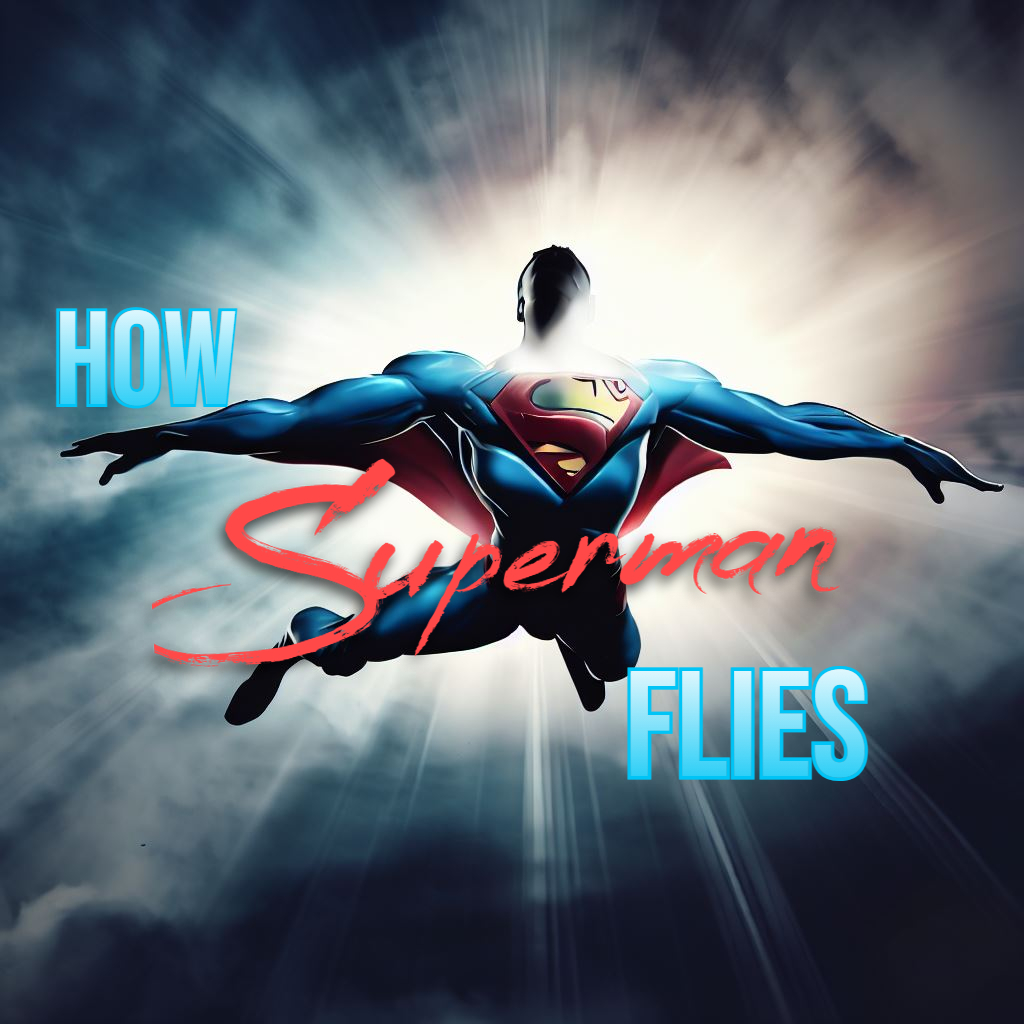How Superman Flies – The Science Behind His Ability
Superman is one of the most iconic superheroes of all time with his impressive array of superhuman abilities. However, one of his most famous and visually stunning powers is undoubtedly his ability to fly. But how exactly does Superman fly and is there any science that could potentially explain this superhuman feat? Let’s take a deeper look.
Challenging Gravity
The most obvious challenge Superman faces when taking to the skies is overcoming Earth’s strong gravitational pull. Our planet’s gravity exerts a force of about 9.8 meters per second squared on all objects at its surface. For a typical human, this results in being firmly grounded.
However, Superman’s alien Kryptonian physiology endows him with incredible strength and his dense muscle tissue may effectively counteract a significant portion of his weight. With strength estimated in the 100-ton range, he could conceivably lift himself off the ground through force alone.
Streamlined Aerodynamics
Once airborne, Superman would need to maintain stable flight trajectories. His body is perfectly streamlined to slice through the air like an airborne missile. His muscles and joints allow for precise control of angular momentum, shifts in center of mass and flexible wing-like arm movements for stabilization and maneuvering.
Metabolism and Respiration
Extended flight may place heavy respiratory and metabolic demands on the body. Superman’s enhanced Yellow Sun cellular absorption and subsequent bioenergy outputs could exponentially boost his endurance levels, allowing him to fly for hours without tiring. His lungs may also process oxygen far more efficiently than humans.
Levitation Through Electromagnetism?
Some theorists postulate that beneath Superman’s skintight flight suit lies an invisible bioelectromagnetic field generated by his cells when charged by solar radiation. This “aura” could create localized anti-gravity effects through repulsion of individual iron nanoparticles in his blood and tissues against Earth’s magnetic field, much like a diamagnetic levitation concept.
While just theories, the above physiological and technological explanations offer a glimpse into how the science fiction of Superman’s flight could one day become science non-fiction. His ability reminds us that the limits of human potential are constantly being redefined.
It takes a bit of scientific suspension of disbelief to accept how Superman defies gravity. But as one of the first and most iconic flying superheroes, his aerial adventures continue inspiring dreams of human flight.
Can any human fly like superman ? if yes then how is it possible ?
- Wing suits – Modern wing suits allow skilled pilots to ‘fly’ through the air by altering body position and using fabric wings similar to squirrel suits. However, they still require falling with gravity and cannot achieve true aerodynamic flight.
- Feathered wings – Some experimental designs have tried attaching mechanical or biological feathered wings to the human body. While prototypes could achieve short glides, true flapping wing flight remains implausible without much heavier and powerful machines.
- Jetpacks – Modern jetpack designs let users hover and maneuver in three dimensions to an extent. But fuel limits durations to just minutes and they cannot match Superman’s agility, payload, or aerodynamic flight control.
- Augmented physiology – Some scientists theorize that genetic engineering or bioelectromagnetic augmentation of the muscles, bones and respiratory/circulatory systems could theoretically enable aerodynamic flight through strength and low body weight alone. But this remains in the realm of science fiction.
- Exoskeletons – Robotic wing-like appendages directly driven and controlled by the human body may one day allow powered flight assistance similar to Superman. But the required miniaturization and energy density advances are still far off.
So while limited controlled flight is possible now, seamlessly mimicking Superman’s vertical take-offs, changes of direction and long-duration flights may require further scientific and technological progress we have not achieved yet. It remains unclear if true unassisted human flight will ever be feasible.

The Challenges and Limitations faced by superman during flying
- Air Resistance – At high speeds, air resistance becomes a significant force pushing against Superman. It takes immense strength to overcome this and maintain control during maneuvers.
- Payload Limitations – Superman has a max weight capacity he can carry or tow while flying based on his own body mass and aerodynamic ability. Extra weight impacts speed, agility, altitude etc.
- G-forces – Performing sharp turns and accelerations at high velocities subjects Superman to strong g-forces. His biology would need to withstand effects like blackouts.
- Oxygen Needs – Prolonged flights at high altitudes could require Superman to consciously regulate his breathing to account for lower oxygen levels.
- Thermal Regulation – Generating lift through flapping or changes in body position produces a lot of kinetic heat. Superman needs to release this heat efficiently to avoid overheating.
- Energy Expenditure – Complex flight techniques are energy intensive. His cells would need to continuously replenish ATP through solar absorption to power flight muscles.
- Impacts and Injuries – Collisions at flight speeds or changes in air pressure could potentially damage tissue, especially if solar charge is depleted.
- Disorientation – Flying at supersonic speeds may induce vertigo if he lacks specialized sensory organs for high-speed navigation.
- Weather Effects – Turbulence, high winds, storms pose challenges to control and stability for even Superman’s abilities.
So in summary – air resistance, g-forces, thermal regulation and available energy would be key physiological limits to consider.
Are there any real-life examples of animals or insects that have similar flying abilities to Superman?
- Dragonflies – Their agility, maneuverability and ability to hover, dart and fly backwards is on par with Superman. They can accelerate faster than most other insects.
- Honeybees – Can fly at speeds up to 15-20 mph and fly backwards and sideways. They have specialized booklice structures on their wings that allow instantaneous changes in wingbeat amplitude.
- Hummingbirds – Ideal for hovering, they can fly in any direction, even upside down. Some can reach speeds over 15 mph. Their wings beat around 80 times per second, allowing precise aerobatic control.
- Bats – Despite their small size, bats can fly at speeds up to 60 mph using echolocation. Some studies found bats can change direction within a single wing beat which requires incredible strength and neuromuscular coordination.
- Frigate birds – Known for their soaring flight, they spend over 90% of their lives airborne. Males can stay aloft without flapping their wings for over 6 months at a time with the aid of thermals and wind currents.
- Albatrosses – With wingspans of 11+ feet, they can fly non-stop for over 1,000 miles without landing. Their gliding efficiency is unparalleled in the animal kingdom due to specialized wing adaptations.
So while no single animal can match all of Superman’s flight feats, certain insects, birds and bats demonstrate remarkable flight capabilities through precision control, power, endurance and navigation of the air.

